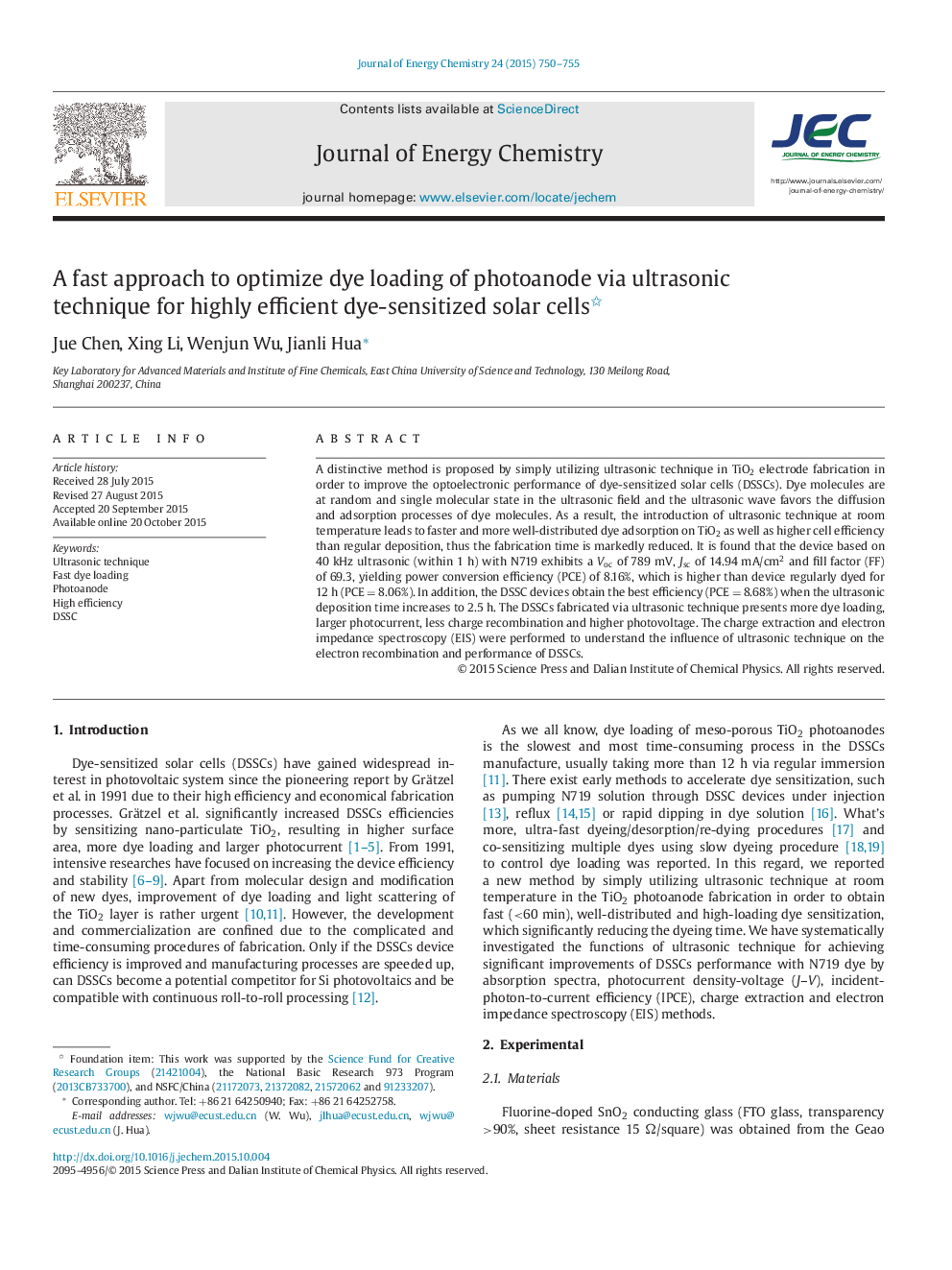| Article ID | Journal | Published Year | Pages | File Type |
|---|---|---|---|---|
| 63799 | Journal of Energy Chemistry | 2015 | 6 Pages |
A distinctive method is proposed by simply utilizing ultrasonic technique in TiO2 electrode fabrication in order to improve the optoelectronic performance of dye-sensitized solar cells (DSSCs). Dye molecules are at random and single molecular state in the ultrasonic field and the ultrasonic wave favors the diffusion and adsorption processes of dye molecules. As a result, the introduction of ultrasonic technique at room temperature leads to faster and more well-distributed dye adsorption on TiO2 as well as higher cell efficiency than regular deposition, thus the fabrication time is markedly reduced. It is found that the device based on 40 kHz ultrasonic (within 1 h) with N719 exhibits a Voc of 789 mV, Jsc of 14.94 mA/cm2 and fill factor (FF) of 69.3, yielding power conversion efficiency (PCE) of 8.16%, which is higher than device regularly dyed for 12 h (PCE = 8.06%). In addition, the DSSC devices obtain the best efficiency (PCE = 8.68%) when the ultrasonic deposition time increases to 2.5 h. The DSSCs fabricated via ultrasonic technique presents more dye loading, larger photocurrent, less charge recombination and higher photovoltage. The charge extraction and electron impedance spectroscopy (EIS) were performed to understand the influence of ultrasonic technique on the electron recombination and performance of DSSCs.
Graphical abstractUltrasonic technique leads to faster dye adsorption and improves optoelectronic performance than regular deposition, and the highest efficiency of 8.68% was obtained for N719-based DSSCs via ultrasonic sensitization.Figure optionsDownload full-size imageDownload as PowerPoint slide
